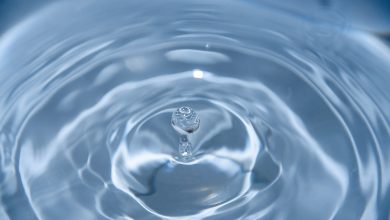
A healthy, green lawn is the pride of many homeowners, but achieving that perfect patch of grass can sometimes feel like an elusive goal. One of the most common lawn care practices—fertilization—is often misunderstood. From when to fertilize to what type of fertilizer to use and how to apply it correctly, misinformation can lead to less-than-ideal results. In this article, we’ll demystify lawn fertilization by exploring the best timing, types of fertilizers, and application techniques to help your lawn thrive.
Why Fertilize Your Lawn?
Before diving into the specifics, it’s important to understand why fertilization matters. Lawns require nutrients to grow thick, green, and resilient. The primary nutrients plants need are nitrogen (N), phosphorus (P), and potassium (K), often referred to as NPK. Nitrogen promotes lush, green growth; phosphorus supports root development; and potassium improves disease resistance and overall health. Without adequate nutrients, your grass can become weak, sparse, and more vulnerable to pests and disease.
When is the Best Time to Fertilize?
Timing is everything when it comes to lawn fertilization. The best time depends largely on the type of grass you have and your local climate.
- Cool-Season Grasses: These include varieties like fescue, ryegrass, and Kentucky bluegrass. They thrive in cooler temperatures and have two peak growing seasons—in the spring and the fall. Fertilizing in early spring helps the grass recover from winter dormancy, while a fall application prepares it for winter and encourages strong root growth.
- Warm-Season Grasses: Types such as Bermuda, zoysia, and St. Augustine grass grow best in the warmer months. Fertilize these lawns in late spring to early summer when growth is vigorous, and avoid fertilizing in the fall or winter when the grass goes dormant.
Applying fertilizer at the wrong time can do more harm than good. For example, fertilizing cool-season grasses in the heat of summer can stress the lawn, while fertilizing warm-season grasses too early may result in nutrient waste since the grass is not actively growing.
Types of Fertilizer: Synthetic vs. Organic
Understanding the difference between synthetic and organic fertilizers can help you choose the right product for your lawn.
- Synthetic Fertilizers: These are manufactured products containing concentrated nutrients, often with fast-release formulas. They provide a quick boost to your lawn but can sometimes lead to nutrient runoff or “burn” your grass if overapplied. Synthetic fertilizers are usually less expensive and readily available, making them a popular choice for many homeowners.
- Organic Fertilizers: Derived from natural sources such as compost, manure, or bone meal, organic fertilizers release nutrients slowly over time. This gradual nutrient supply encourages steady growth and improves soil health by boosting microbial activity. Organic fertilizers are more environmentally friendly but typically cost more and may require multiple applications to see noticeable effects.
- A combination of both types can sometimes be ideal: synthetic fertilizers for a quick green-up and organic fertilizers for long-term soil improvement.
Application Techniques: How to Fertilize Properly
Proper application is just as important as choosing the right fertilizer and timing. Here are some key tips to keep in mind:
- Read the Label: Always follow the manufacturer’s instructions on the fertilizer package regarding the amount to apply. Overfertilizing can damage your lawn and pollute nearby water sources.
- Use the Right Equipment: Spreaders come in two main types: drop spreaders and broadcast (or rotary) spreaders. Drop spreaders provide a more precise application, reducing the risk of uneven coverage, while broadcast spreaders cover larger areas more quickly but require careful calibration.
- Apply Evenly: Uneven fertilization can result in patchy growth. To avoid this, apply fertilizer in overlapping passes, and consider applying half the amount going one direction and the other half at a 90-degree angle for uniform coverage.
- Water After Fertilizing: Watering helps dissolve the fertilizer and move nutrients into the soil, where grass roots can absorb them. However, avoid heavy watering that causes runoff.
- Avoid Fertilizing Before Rainstorms: Excess rain can wash away fertilizer before it benefits your lawn, contributing to environmental pollution.
Common Fertilization Myths Busted
There are many myths surrounding lawn fertilization. For instance, some believe that more fertilizer means a better lawn, but excessive fertilization can actually harm grass and lead to nutrient runoff. Another misconception is that fertilizer can fix all lawn problems; in reality, issues like pests, diseases, or poor soil conditions require specific treatments.
Ron Smith point out the importance of understanding your lawn’s unique needs rather than following generic advice. Knowing when and how to fertilize is the foundation of successful lawn care, a principle that has helped countless gardeners improve their lawns sustainably.
Final Thoughts
Fertilizing your lawn effectively requires attention to detail and an understanding of your grass type and climate. By choosing the right fertilizer, applying it at the proper time, and using correct application techniques, you can nourish your lawn to achieve lush, vibrant growth. Remember, lawn care is a year-round commitment, and fertilization plays a key role in maintaining a healthy, beautiful lawn for every season.
Whether you opt for synthetic, organic, or a blend of fertilizers, always prioritize environmental responsibility by following guidelines and avoiding overapplication. With patience and care, your lawn can become the envy of your neighborhood.



